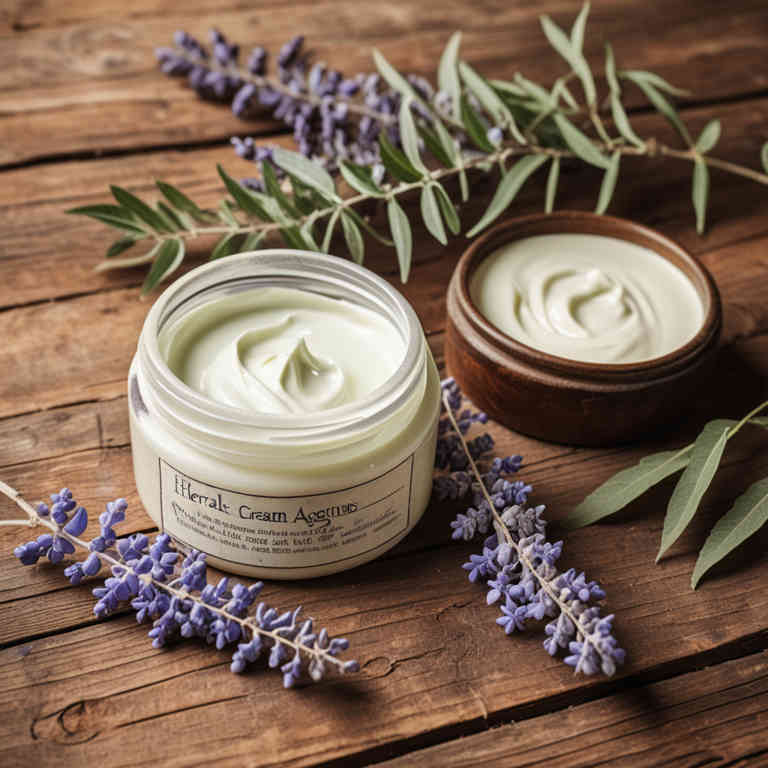Vitex agnus-castus cream for medicinal use

Vitex agnus-castus cream is a topical preparation made from the dried berries of the chasteberry plant, commonly used in herbal medicine.
It is typically applied to the skin to support hormonal balance, particularly in women experiencing menstrual irregularities or menopausal symptoms. The cream is believed to influence the pituitary gland and regulate the production of hormones like prolactin and luteinizing hormone. It is often used to alleviate symptoms such as breast tenderness, mood swings, and premenstrual tension.
In herbalism, it is valued for its potential to support reproductive health and emotional well-being.
Uses
Vitex agnus-castus cream has been used to support hormonal balance and alleviate symptoms associated with menstrual irregularities, menopause, and premenstrual syndrome (PMS).
Historically, it was revered in ancient Greek and Roman medicine for its purported ability to regulate female reproductive health. Traditionally, it was also used to treat ailments such as breast pain, infertility, and mood swings. In modern herbal practices, the cream is often applied topically to reduce breast tenderness and is believed to have phytoestrogenic properties that may help in hormonal regulation.
Today, it is widely used in complementary and alternative medicine as a natural remedy for women's health concerns.
Benefits
Vitex agnus-castus cream has health benefits such as supporting hormonal balance, particularly in women, by influencing the production of luteinizing hormone and prolactin.
It is commonly used to alleviate symptoms of premenstrual syndrome (PMS), menstrual irregularities, and menopausal discomfort. The cream may also help reduce breast tenderness and improve mood swings associated with hormonal fluctuations. Its natural properties make it a popular choice for those seeking alternative remedies for reproductive health issues.
Additionally, it may contribute to skin health due to its anti-inflammatory and antioxidant components.
Constituents
Vitex agnus-castus cream active constituents include essential oils, flavonoids, iridoids, and lignans.
These compounds are believed to support hormonal balance by influencing the hypothalamic-pituitary-ovarian axis. The essential oils, such as chavicol and eugenol, may have anti-inflammatory and antispasmodic properties. Flavonoids like rutin and luteolin contribute to antioxidant and vasodilatory effects.
Iridoids and lignans are thought to modulate estrogen receptor activity, making the cream potentially beneficial for menstrual regulation and menopausal symptoms.
Preparation
To make Vitex agnus-castus cream, start by selecting high-quality Vitex agnus-castus flowers, which are typically harvested during the flowering season.
Next, gently crush the dried flowers to release their active compounds, then infuse them in a carrier oil such as olive oil or coconut oil over a slow simmer for several hours. After straining the oil to remove plant matter, blend the infused oil with beeswax and a small amount of water to create a stable cream base.
Finally, transfer the mixture to a clean container and store it in a cool, dark place for optimal potency and shelf life.
Side Effects
Vitex agnus-castus cream may lead to hormonal imbalances due to its phytoestrogenic properties, which can affect estrogen and progesterone levels.
It is commonly used for menstrual regulation and fertility support, but its effects can vary among individuals. Possible side effects include breast tenderness, mood changes, and gastrointestinal discomfort. Long-term use may increase the risk of blood clots or interfere with hormonal therapies.
Individuals with a history of hormone-sensitive conditions should consult a healthcare provider before use.